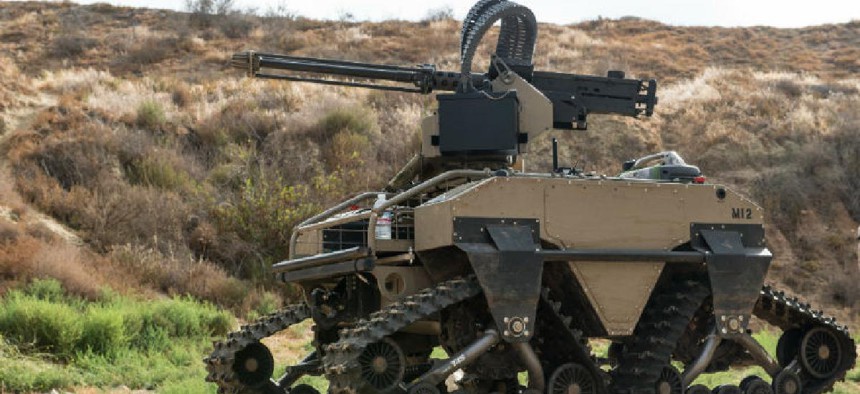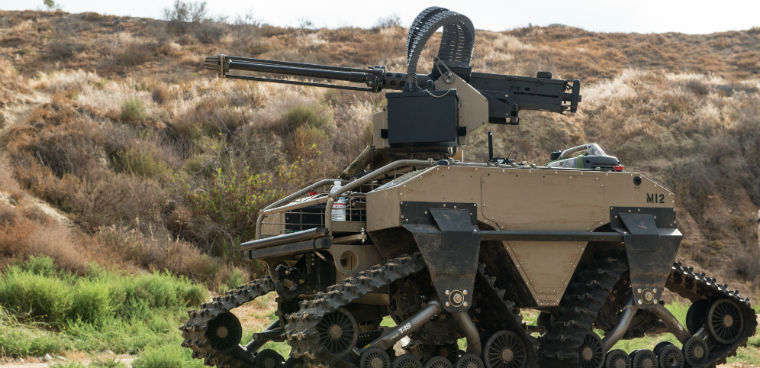Army secretary wants robot vehicles on the battlefield by 2028

It's not Skynet yet, but Army Secretary Mark Esper says robotics will change the fundamentals of warfare and that getting there first provides a distinct advantage.

The Marines field a remote-controlled vehicle mounted with a .50-caliber machine gun called MUTT -- short for Multi Utility Tactical Transport. The Army is looking for the next generation of battlefield technology, including autonomous vehicles.
Robotics is crucial to Army Secretary Mark Esper’s strategic vision, and he wants to have unmanned vehicles on the battlefield by 2028.
Esper previewed the Army’s soon-to-be-released strategic vision calling for unmanned vehicles as an integral part of the force at a Brookings Institute event June 5.
“I think robotics has the potential of fundamentally changing the character of warfare. And I think whoever gets there first will have a unique advantage on the modern battlefield,” Esper said.
“My ambition is by 2028, to begin fielding autonomous and certainly semi-autonomous vehicles that can fight on the battlefield," he said. "Fight, sustain us, provide those things we need and we’ll continue to evolve from there.”
Esper quoted the Army’s strategic vision document expected to be released June 6: “The Army of 2028 will be able to deploy, fight, and win decisively against any adversary, anytime, and anywhere … through the employment of modern manned and unmanned ground combat systems aircraft, sustainment systems and weapons.”
When asked about concerns of robotics threatening humanity, Esper jokingly replied, “Well, we’re not doing a T-3000 yet,” referencing the cyborg assassin robot in the 2015 movie "Terminator Genisys."
However, he said, the Army’s unmanned vehicle program would be most akin to the Air Force’s use of Predator drones. Ideally, autonomous vehicles would better protect soldiers by removing them from direct conflict, enhancing mobility and tactical ability. Eventually the Army could make lighter, cheaper tanks because there would be no crew inside to protect.
But regardless, there will be a human element, he said.
“In my vision, at least, there will be a soldier in the loop. There needs to be. The battlefield is too complex as is,” Esper said.



